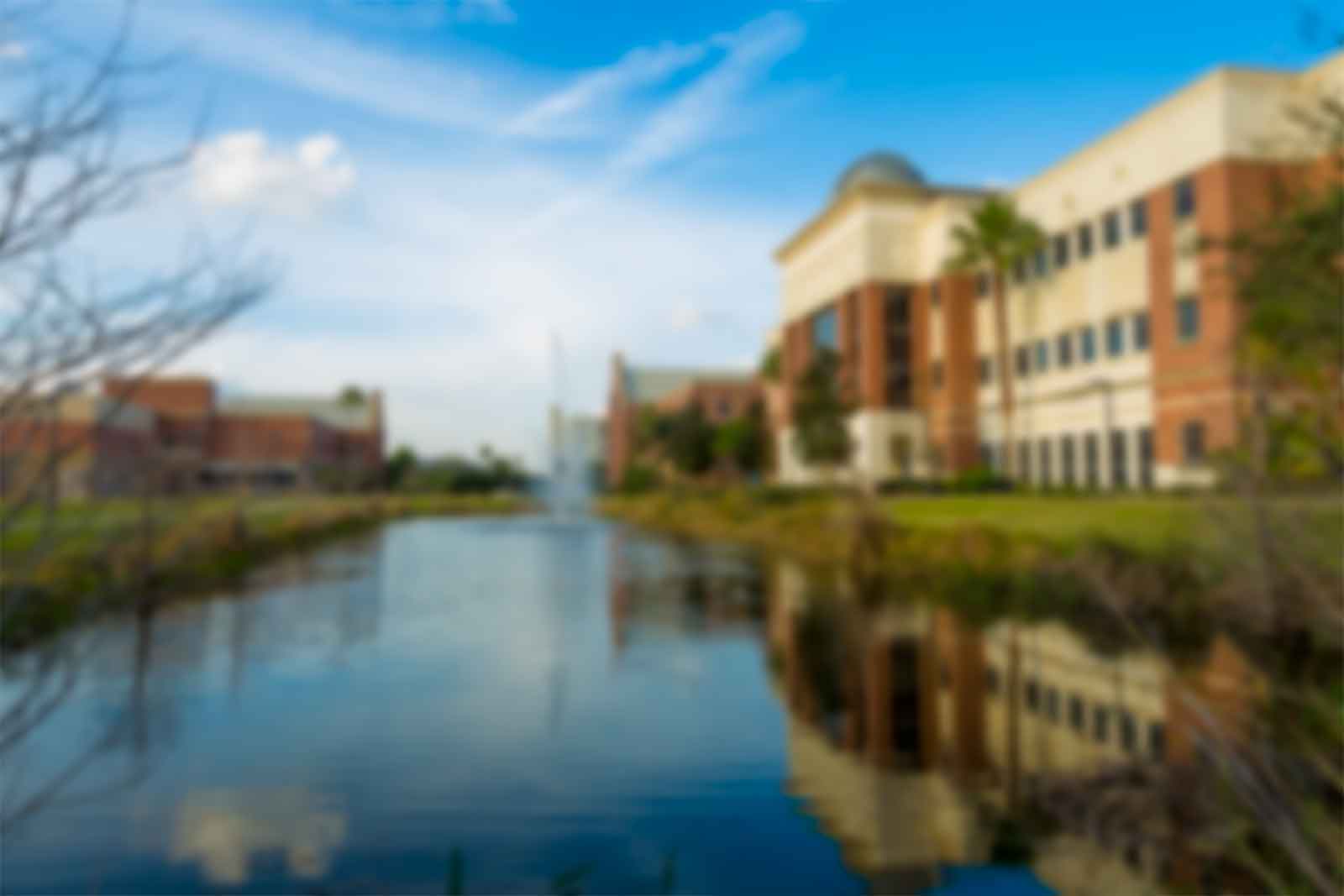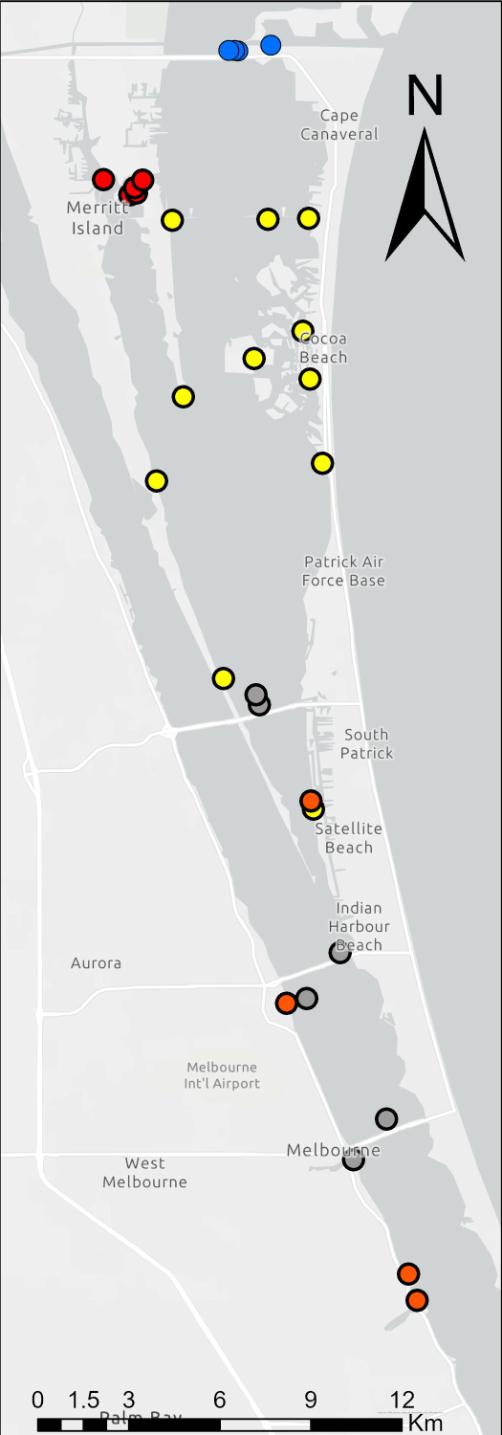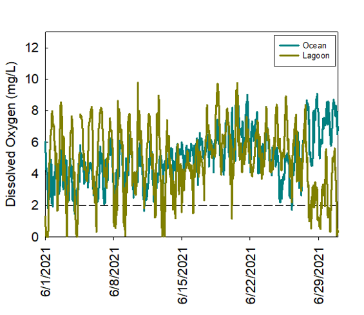

Dissolved Oxygen (DO) refers to the amount of oxygen, as O2, present in water and is arguably one of the most important indicators of water quality. Too little dissolved oxygen can kill fish and other organisms. As water becomes increasingly polluted with excess nutrients, concentrations of DO become less stable and coastal areas are more frequently experiencing periods of low DO that can lead to fish kills and changes to internal nutrient cycling.
The amount of oxygen that dissolves in water changes with temperature and salinity; however, photosynthesis (plants) add oxygen to the water and respiration or decomposition (bacteria) consume oxygen from water, especially when the bottom contains muddy sediments with lots of organic matter. Because plants and algae (tiny plants) grow near the surface and bacteria decompose the abundant organic matter in sediments, we often see higher oxygen near the surface of the water and lower oxygen near the bottom. We also see lower oxygen near more "polluted" muddy sediments compared to healthier sandy sediments.
Our growing network of dissolved oxygen sensors is designed to address the question: what is the spatial and temporal extent of hypoxia in the Indian River Lagoon and how does it evolve over time. These data will help to better select restoration sites, improving outcomes and will help to improve nutrient load and harmful algal bloom models providing important information to lagoon managers.

Map of the Indian River Lagoon with dots showing the approximate location of bottom water dissolve oxygen loggers. Color represent sensors maintained by different projects. Contact us for details. afox@fit.edu

Example dataset showing the more variable DO concentrations in the Banana River Lagoon, relative to DO in seawater from Port Canaveral. The horizontal dotted line indicates 2 mg/L, less than 2 mg/L of DO is considered hypoxic where we start to see adverse biological impacts.

Dissolved Oxygen Data (mg/L) in bottom water at sites throughout the Indian River Lagoon / Banana River Lagoon.
For data or more information contact: afox@fit.edu
© Florida Institute of Technology, All Rights Reserved